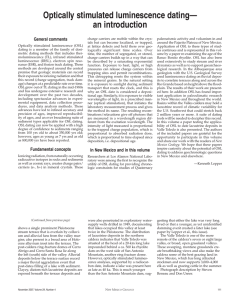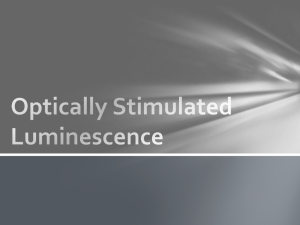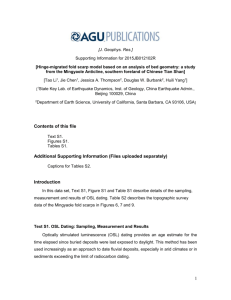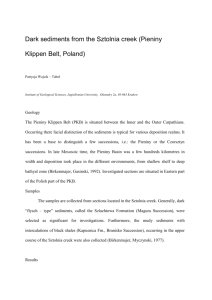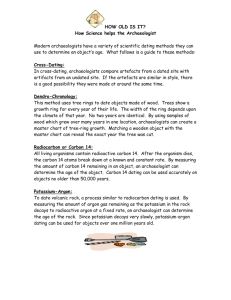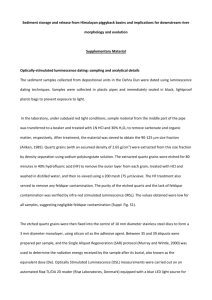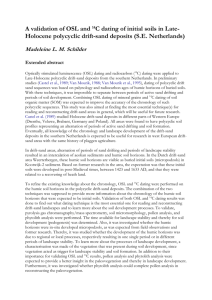The spatial extent and characteristics of block fields in Alpine areas
advertisement
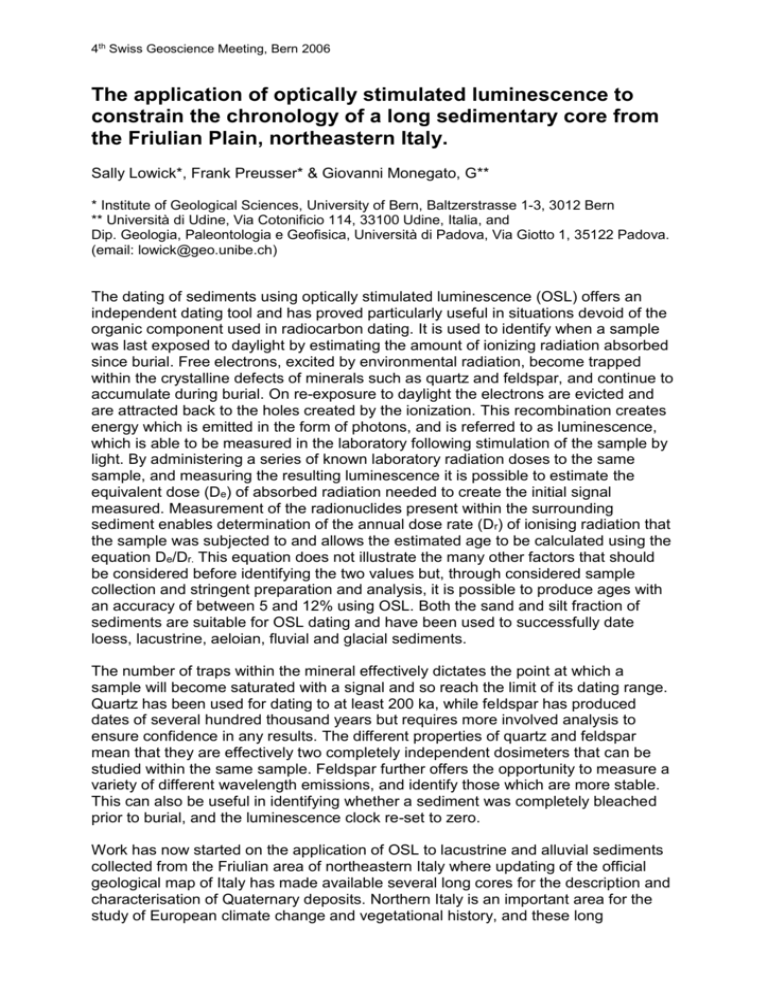
4th Swiss Geoscience Meeting, Bern 2006 The application of optically stimulated luminescence to constrain the chronology of a long sedimentary core from the Friulian Plain, northeastern Italy. Sally Lowick*, Frank Preusser* & Giovanni Monegato, G** * Institute of Geological Sciences, University of Bern, Baltzerstrasse 1-3, 3012 Bern ** Università di Udine, Via Cotonificio 114, 33100 Udine, Italia, and Dip. Geologia, Paleontologia e Geofisica, Università di Padova, Via Giotto 1, 35122 Padova. (email: lowick@geo.unibe.ch) The dating of sediments using optically stimulated luminescence (OSL) offers an independent dating tool and has proved particularly useful in situations devoid of the organic component used in radiocarbon dating. It is used to identify when a sample was last exposed to daylight by estimating the amount of ionizing radiation absorbed since burial. Free electrons, excited by environmental radiation, become trapped within the crystalline defects of minerals such as quartz and feldspar, and continue to accumulate during burial. On re-exposure to daylight the electrons are evicted and are attracted back to the holes created by the ionization. This recombination creates energy which is emitted in the form of photons, and is referred to as luminescence, which is able to be measured in the laboratory following stimulation of the sample by light. By administering a series of known laboratory radiation doses to the same sample, and measuring the resulting luminescence it is possible to estimate the equivalent dose (De) of absorbed radiation needed to create the initial signal measured. Measurement of the radionuclides present within the surrounding sediment enables determination of the annual dose rate (Dr) of ionising radiation that the sample was subjected to and allows the estimated age to be calculated using the equation De/Dr. This equation does not illustrate the many other factors that should be considered before identifying the two values but, through considered sample collection and stringent preparation and analysis, it is possible to produce ages with an accuracy of between 5 and 12% using OSL. Both the sand and silt fraction of sediments are suitable for OSL dating and have been used to successfully date loess, lacustrine, aeloian, fluvial and glacial sediments. The number of traps within the mineral effectively dictates the point at which a sample will become saturated with a signal and so reach the limit of its dating range. Quartz has been used for dating to at least 200 ka, while feldspar has produced dates of several hundred thousand years but requires more involved analysis to ensure confidence in any results. The different properties of quartz and feldspar mean that they are effectively two completely independent dosimeters that can be studied within the same sample. Feldspar further offers the opportunity to measure a variety of different wavelength emissions, and identify those which are more stable. This can also be useful in identifying whether a sediment was completely bleached prior to burial, and the luminescence clock re-set to zero. Work has now started on the application of OSL to lacustrine and alluvial sediments collected from the Friulian area of northeastern Italy where updating of the official geological map of Italy has made available several long cores for the description and characterisation of Quaternary deposits. Northern Italy is an important area for the study of European climate change and vegetational history, and these long 4th Swiss Geoscience Meeting, Bern 2006 sequences rely on radiocarbon and pollen sequences for their correlation with other European sequences. The use of OSL offers the opportunity to date beyond the radiocarbon limit and provide absolute dates to these pollen sequences. Because limited material is available within these cores, fresh samples have first been taken from deposits in the Valeriano Creek further north. The sediments here are important for correlating deposits in the foothills of the Prealps to the north, with those that lay to the south on the Friulian and Po Plains. These, again, rely on pollen sequences beyond the radiocarbon limits and may not be continuous sedimentation to would benefit greatly from absolute dates. Testing of samples from this area has already been done to identify the appropriate OSL protocols on coarse grain quartz and feldspar, as well as the fine grain fraction. The preliminary results are now available and are encouraging enough to begin work on the longer sedimentary core.
